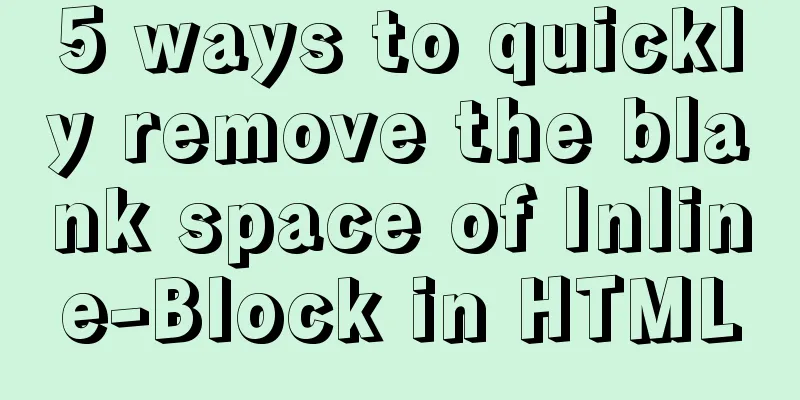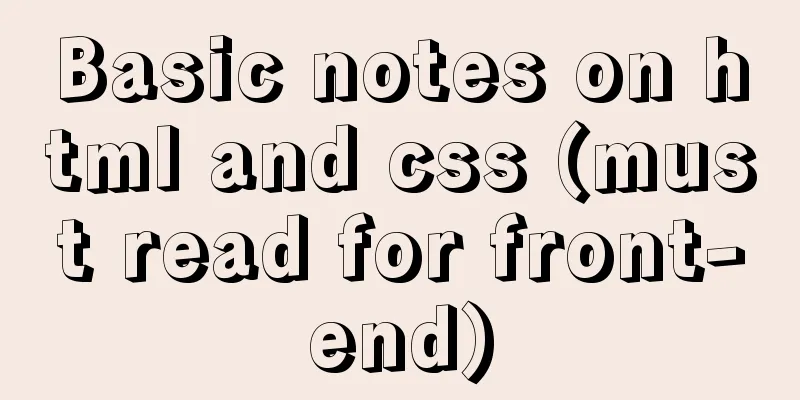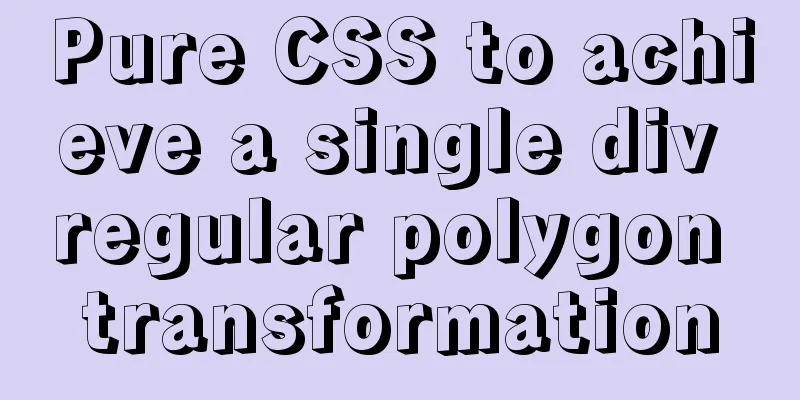5 ways to quickly remove the blank space of Inline-Block in HTML

|
The inline-block property value becomes very useful when you need to control margin and padding on "inline" elements, so you no longer need to make these elements "block" or "float". But there is a problem, when using inline-block, the whitespace between HTML elements will show up on the page. Very annoying. There are a few ways to remove these whitespaces; one of them is quite clever. Method 1: No space between elements A 100% surefire way to fix this is to not leave any whitespace between elements in your HTML: CSS CodeCopy content to clipboard
Of course, this looks messy and makes the code difficult to maintain, but it is practical, intuitive, and most importantly... reliable. Method 2: Set font-size: 0 on the parent element The best solution to this whitespace issue is to set font-size: 0 on the parent element of these inline-block elements. If you have an inline-block <LI> inside your <UL>, you can do this: XML/HTML CodeCopy content to clipboard
In order to prevent the font size of the parent element from affecting the child element, you need to re-set the font-size value on the child element, which is usually simple. The only time you might run into trouble is if you use relative font sizes. But most of the time, this method can solve your problem. Method 3: HTML Comments This method is a bit more brute force, but it works just as well. Padding HTML elements with comments has the same effect as having no space between them: XML/HTML CodeCopy content to clipboard
In one word…disgusting. In two words…disgusting. In three words….OK, you get it. But it works! Method 4: Negative Margins Very similar to method 2 , sorry. You can take advantage of the flexibility of inline-block and give them a negative margin to hide the whitespace: XML/HTML CodeCopy content to clipboard
This method is the least recommended because you have to take various situations into account and sometimes there will be some unforeseen gaps. It’s best not to use this trick. Method 5: Chain Link Another way to take advantage of HTML markup is to place the closing tag of an element close to the opening tag of the next element: XML/HTML CodeCopy content to clipboard
Not as ugly as HTML comments, but I'd rather remove those whitespaces by hand regardless of code readability. No approach is ideal, but leaving no whitespace on a web page is a bad approach. This is not to warn you not to use inline-block. Inline-block is still very useful. You just need to understand how to deal with the whitespace inside it. The above is the full content of this article. I hope it will be helpful for everyone’s study. I also hope that everyone will support 123WORDPRESS.COM. |
<<: MySQL beginners can say goodbye to the troubles of grouping and aggregation queries
>>: Using vue3+threejs to imitate the iView official website big wave special effects example
Recommend
Typora code block color matching and title serial number implementation code
Effect: The title has its own serial number, the ...
Solution to Chinese garbled characters when operating MySQL database in CMD
I searched on Baidu. . Some people say to use the...
How to install phabricator using Docker
I am using the Ubuntu 16.04 system here. Installa...
JavaScript to achieve dynamic color change of table
This article shares the specific code for JavaScr...
Common DIV tasks (Part 2) — Transform into editors and various DIY applications of DIV
Since the introduction of the contentEditable attr...
Solution to many line breaks and carriage returns in MySQL data
Table of contents Find the problem 1. How to remo...
The difference between clientWidth, offsetWidth, scrollWidth in JavaScript
1. Concept They are all attributes of Element, in...
MySQL 8.0.12 installation and configuration method graphic tutorial (windows10)
This article records the installation graphic tut...
A brief analysis of the use of watchEffect in Vue3
Preface Everyone should be familiar with the watc...
JS ES new feature of variable decoupling assignment
Table of contents 1. Decoupled assignment of arra...
Summary of the use of Datetime and Timestamp in MySQL
Table of contents 1. How to represent the current...
CentOS7 network configuration under VMware virtual machine (host wireless Internet access)
This is the first time I used the CentOS7 system ...
Detailed tutorial on installing MySQL 8.0 from source code on CentOS 7.4
Table of contents 1. Environment 2. Preparation 3...
Graphical analysis of MYSQL5.7 configuration file location in Windows environment
1. MYSQL installation directory Copy the code as ...
Detailed tutorial on docker-compose deployment and configuration of Jenkins
Docker-compose deployment configuration jenkins 1...









